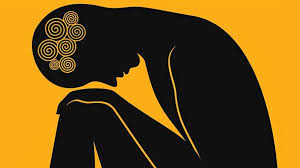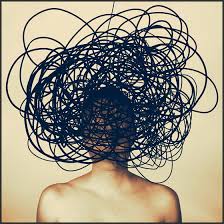
Depression and anxiety disorders are different, but people with depression often experience symptoms similar to those of anxiety disorder, such as nervousness, irritability, and problems sleeping, and concentrating. Each behavior however, has its own emotional and behavioral symptoms.
Disproportionate reactions of tension and worry characterize anxiety. The American Psychological Association (APA) defines anxiety as ”emotions characterized by feelings of tension, worried thoughts and physical changes like increased blood pressure.
Types of Depression
Here’s a look at nine types of depression and how they affect people.
1. Major depression
Major depression is also known as major depressive disorder, classic depression, or unipolar depression. It’s fairly common — about 16.2 million adults in the U.S. have experienced at least one major depressive episode.
People with major depression experience symptoms most of the day, every day. Like many mental health conditions, it has little to do with what’s happening around you. You can have a loving family, tons of friends, and a dream job. You can have the kind of life that others envy and still have depression.
Even if there’s no obvious reason for your depression, that doesn’t mean it’s not real or that you can simply tough it out.
It’s a severe form of depression that causes symptoms such as:
- despondency, gloom, or grief
- difficulty sleeping or sleeping too much
- lack of energy and fatigue
- loss of appetite or overeating
- unexplained aches and pains
- loss of interest in formerly pleasurable activities
- lack of concentration, memory problems, and inability to make decisions
- feelings of worthlessness or hopelessness
- constant worry and anxiety
- thoughts of death, self-harm, or suicide
These symptoms can last weeks or even months. Some people might have a single episode of major depression, while others experience it throughout their life. Regardless of how long its symptoms last, major depression can cause problems in your relationships and daily activities.
2. Persistent depression
Persistent depressive disorder is depression that lasts for two years or more. It’s also called dysthymia or chronic depression. Persistent depression might not feel as intense as major depression, but it can still strain relationships and make daily tasks difficult.
Some symptoms of persistent depression include:
- deep sadness or hopelessness
- low self-esteem or feelings of inadequacy
- lack of interest in things you once enjoyed
- appetite changes
- changes to sleep patterns or low energy
- concentration and memory problems
- difficulty functioning at school or work
- inability to feel joy, even at happy occasions
- social withdrawal
Though it’s a long-term type of depression, the severity of symptoms can become less intense for months at a time before worsening again. Some people also have episodes of major depression before or while they have persistent depressive disorder. This is called double depression.
Persistent depression lasts for years at a time, so people with this type of depression may start to feel like their symptoms are just part of their normal outlook on life.
3. Manic depression, or bipolar disorder
Manic depression consists of periods of mania or hypomania, where you feel very happy, alternating with episodes of depression. Manic depression is an outdated name for bipolar disorder.
In order to be diagnosed with bipolar I disorder, you have to experience an episode of mania that lasts for seven days, or less if hospitalization is required. You may experience a depressive episode before or following the manic episode.
Depressive episodes have the same symptoms as major depression, including:
- feelings of sadness or emptiness
- lack of energy
- fatigue
- sleep problems
- trouble concentrating
- decreased activity
- loss of interest in formerly enjoyable activities
- suicidal thoughts
Signs of a manic phase include:
- high energy
- reduced sleep
- irritability
- racing thoughts and speech
- grandiose thinking
- increased self-esteem and confidence
- unusual, risky, and self-destructive behavior
- feeling elated, “high,” or euphoric
In severe cases, episodes can include hallucinations and delusions. Hypomania is a less severe form of mania. You can also have mixed episodes in which you have symptoms of both mania and depression.
4. Depressive psychosis

Some people with major depression also go through periods of losing touch with reality. This is known as psychosis, which can involve hallucinations and delusions. Experiencing both of these together is known clinically as major depressive disorder with psychotic features. However, some providers still refer to this phenomenon as depressive psychosis or psychotic depression.
Hallucinations are when you see, hear, smell, taste, or feel things that aren’t really there. An example of this would be hearing voices or seeing people who aren’t present. A delusion is a closely held belief that’s clearly false or doesn’t make sense. But to someone experiencing psychosis, all of these things are very real and true.
Depression with psychosis can cause physical symptoms as well, including problems sitting still or slowed physical movements.
5. Perinatal depression
Perinatal depression, which is clinically known as major depressive disorder with peripartum onset, occurs during pregnancy or within four weeks of childbirth. It’s often called postpartum depression. But that term only applies to depression after giving birth. Perinatal depression can occur while you’re pregnant.
Hormonal changes that happen during pregnancy and childbirth can trigger changes in the brain that lead to mood swings. The lack of sleep and physical discomfort that often accompanies pregnancy and having a newborn doesn’t help, either.
Symptoms of perinatal depression can be as severe as those of major depression and include:
- sadness
- anxiety
- anger or rage
- exhaustion
- extreme worry about the baby‘s health and safety
- difficulty caring for yourself or the new baby
- thoughts of self-harm or harming the baby
Women who lack support or have had depression before are at increased risk of developing perinatal depression, but it can happen to anyone.
6. Premenstrual dysphoric disorder
Premenstrual dysphoric disorder (PMDD) is a severe form of premenstrual syndrome (PMS). While PMS symptoms can be both physical and psychological, PMDD symptoms tend to be mostly psychological.
These psychological symptoms are more severe than those associated with PMS. For example, some women might feel more emotional in the days leading up to their period. But someone with PMDD might experience a level of depression and sadness that gets in the way of day-to-day functions.
Other possible symptoms of PMDD include:
- cramps, bloating, and breast tenderness
- headaches
- joint and muscle pain
- sadness and despair
- irritability and anger
- extreme mood swings
- food cravings or binge eating
- panic attacks or anxiety
- lack of energy
- trouble focusing
- sleep problems
Similarly to perinatal depression, PMDD is believed to be related to hormonal changes. Its symptoms often begin just after ovulation and start to ease up once you get your period.
Some women dismiss PMDD as just a bad case of PMS, but PMDD can become very severe and include thoughts of suicide.
7. Seasonal depression
Seasonal depression, also called seasonal affective disorder and clinically known as major depressive disorder with seasonal pattern, is depression that’s related to certain seasons. For most people, it tends to happen during the winter months.
Symptoms often begin in the fall, as days start to get shorter, and continue through the winter. They include:
- social withdrawal
- increased need for sleep
- weight gain
- daily feelings of sadness, hopelessness, or unworthiness
Seasonal depression may get worse as the season progresses and can lead to suicidal thoughts. Once spring rolls around, symptoms tend to improve. This might be related to changes in your bodily rhythms in response to the increase in natural light.
8. Situational depression
Situational depression, clinically known as adjustment disorder with depressed mood, looks like major depression in many respects.
But it’s brought on by specific events or situations, such as:
- the death of a loved one
- a serious illness or other life-threatening event
- going through divorce or child custody issues
- being in emotionally or physically abusive relationships
- being unemployed or facing serious financial difficulties
- facing extensive legal troubles
Of course, it’s normal to feel sad and anxious during events like these — even to withdraw from others for a bit. But situational depression happens when these feelings start to feel out of proportion with the triggering event and interfere with your daily life.
Situational depression symptoms tend to start within three months of the initial event and can include:
- frequent crying
- sadness and hopelessness
- anxiety
- appetite changes
- difficulty sleeping
- aches and pains
- lack of energy and fatigue
- inability to concentrate
- social withdrawal
9. Atypical depression
Atypical depression refers to depression that temporarily goes away in response to positive events. Your doctor might refer to it as major depressive disorder with atypical features.
Despite its name, atypical depression isn’t unusual or rare. It also doesn’t mean that it’s more or less serious than other types of depression.
Having atypical depression can be particularly challenging because you may not always “seem” depressed to others (or yourself). But it can also happen during an episode of major depression. It can occur with persistent depression as well.
Other symptoms of atypical depression can include:
- increased appetite and weight gain
- disordered eating
- poor body image
- sleeping much more than usual
- insomnia
- heaviness in your arms or legs that lasts an hour or more a day
- feelings of rejection and sensitivity to criticism
- assorted aches and pains
How do I know which type I have?

If you think you might have any type of depression, it’s important to follow up with a doctor. All depression types discussed in this article are treatable, though it might take some time to find the right treatment for you.
If you’ve had a previous bout of depression and think it may be happening again, see your psychiatrist or other mental health professional right away.
If you’ve never had depression before, start with your primary care physician. Some symptoms of depression can be related to an underlying physical condition that should be addressed.
Try to give your doctor as much information about your symptoms as you can. If possible, mention:
- when you first noticed them
- how they’ve affected your daily life
- any other mental health conditions you have
- any information about a history of mental illness in your family
- all prescription and over-the-counter medications you take, including supplements and herbs
It might feel uncomfortable, but try to tell your doctor everything. This will help them give you a more accurate diagnosis and refer you to the right type of mental health professional.
Suicide prevention
If you think someone is at immediate risk of self-harm or hurting another person:
- Call 911 or your local emergency number.
- Stay with the person until help arrives.
- Remove any guns, knives, medications, or other things that may cause harm.
- Listen, but don’t judge, argue, threaten, or yell.
